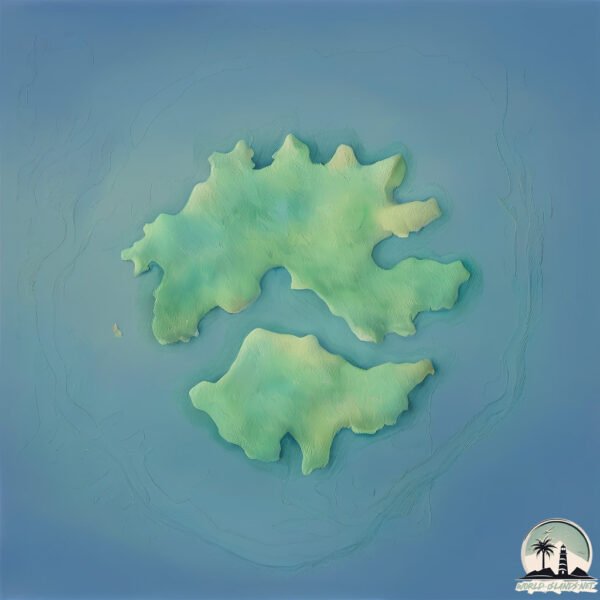Utupua

Welcome to Utupua, a Tropical island in the Coral Sea, part of the majestic Pacific Ocean. This guide offers a comprehensive overview of what makes Utupua unique – from its geography and climate to its population, infrastructure, and beyond. Dive into the details:
- Geography and Size: Explore the island’s size and location.
- Climate and Weather: Weather patterns and temperature.
- Topography and Nature: Uncover the natural wonders of the island.
- Infrastructure and Travelling: Insights on reaching, staying, and making the most of your visit.
- News and Headlines: Latest News.
Geography and size of Utupua
Size: 73.3 km²
Coastline: 72.2 km
Ocean: Pacific Ocean
Sea: Coral Sea
Continent: Oceania
Utupua is a Medium Island spanning 73 km² with a coastline of 72 km.
Archipel: Melanesia – A subregion of Oceania in the southwestern Pacific Ocean, including countries like Fiji, Solomon Islands, and Vanuatu, known for their diverse cultures and languages.
Tectonic Plate: Somalia – A large tectonic plate covering the Horn of Africa and parts of the Indian Ocean, known for the East African Rift where it’s splitting away from the African Plate.
The geographic heart of the island is pinpointed at these coordinates:
Latitude: -11.26051337 / Longitude: 166.5258344
Climate and weather of Utupua
Climate Zone: Tropical
Climate Details: Tropical Rainforest Climate
Temperature: Hot
Climate Characteristics: This climate is typified by heavy rainfall throughout the year, high humidity, and consistently high temperatures, leading to lush rainforests and rich biodiversity. Seasonal temperature variations are minimal.
Topography and nature of Utupua
Timezone: UTC+11:00
Timezone places: Pacific/Guadalcanal
Max. Elevation: 207 m
Mean Elevation: 78 m
Vegetation: Evergreen Broadleaf Forest
Tree Coverage: 96%
The mean elevation is 78 m. The highest elevation on the island reaches approximately 207 meters above sea level. The island is characterized by Hills: Gently sloping landforms with rounded tops, having a maximum elevation between 200 and 500 meters. Hills contribute to a varied landscape on islands.
Dominating Vegetation: Evergreen Broadleaf Forest
Characterized by dense, lush canopies of broadleaf trees that retain their leaves year-round. These forests are typically found in tropical and subtropical regions and are known for their high biodiversity. Utupua has a tree cover of 96 %.
Vegetation: 6 vegetation zones – Very Highly Diverse Island
Islands in this range are ecological powerhouses, showcasing a wide array of vegetation zones. Each zone, from lush rainforests to arid scrublands, coastal mangroves to mountainous regions, contributes to a complex and interdependent ecosystem. These islands are often hotspots of biodiversity, supporting numerous species and intricate ecological processes.
Infrastructure and Travelling to Utupua
Does the island have a public airport? no.
There is no public and scheduled airport on Utupua. The nearest airport is Santa Cruz/Graciosa Bay/Luova Airport, located 95 km away.
Does the island have a major port? no.
There are no major ports on Utupua. The closest major port is LUGANVILLE, approximately 472 km away.
The mean population of Utupua is 17 per km². Utupua is Gently Populated. The island belongs to Solomon Islands.
The name of the island resonates across different cultures and languages. Here is how it is known around the world: Arabic: يوتوبيا; German: Utupua; Spanish: Utupua; French: Utupua; Portuguese: Utupua; Russian: Утупуа; Chinese: 乌图普阿岛
Continuing your journey, Vanikolo is the next notable island, situated merely km away.
Step into the Heart of Utupua Island | Experience the Enchanting Traditional Dances of the Solomons



Solomon Islands is classified as Least developed region: Countries that exhibit the lowest indicators of socioeconomic development, with the lowest Human Development Index ratings. The level of income is Lower middle income.
News – Latest Updates and Headlines from Utupua
Stay informed with the most recent news and important headlines from Utupua. Here’s a roundup of the latest developments.
Please note: The data used here has been primarily extracted from satellite readings. Deviations from exact values may occur, particularly regarding the height of elevations and population density. Land area and coastline measurements refer to average values at mean high tide.
